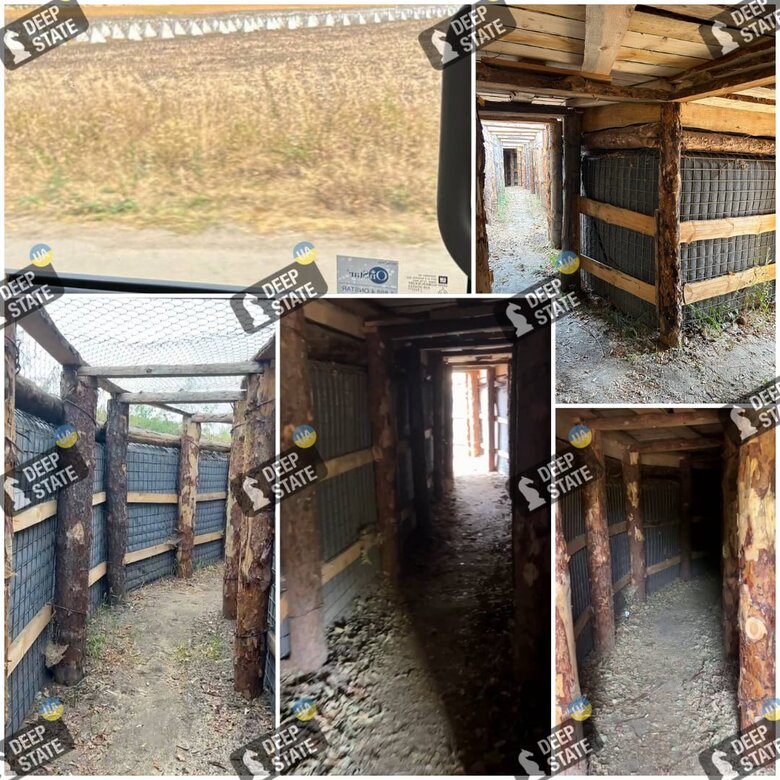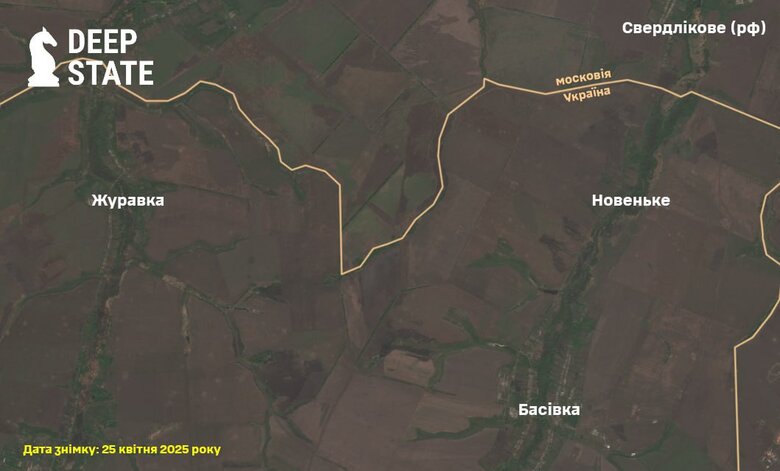Before Russian offensive on Sumy region, fortifications were completely absent where enemy infantry is now pushing – DeepState
Satellite imagery from 25 April 2025 shows a total absence of engineering-fortification structures (EFS) along the Zhuravka – Novenke – Basivka stretch all the way to Khotin and Yunakivka. For that reason, Russian troops are applying pressure on this sector with large infantry forces.
The finding was reported by analysts of the DeepState project, Censor.NET notes.
According to the analysts’ own trips to the Sumy region in autumn 2024, the works that had been built proved largely symbolic: trenches and underground strongpoints, sometimes covered with anti-FPV netting, but lacking proper engineering obstacles.
The EFS are generally located about 20 to 25 kilometers from the state border, meaning they lie well inside the territory.
"On one hand, you can see underground strongpoints and trenches covered with nets designed to counter FPV drones. But the engineering obstacles — which are an effective factor in holding off the enemy — were treated carelessly at the time. Compared to places like the Dnipro region, it’s just a row of ‘dragon’s teeth’ in the field — way too simple and cheap. According to some fighters, there are now urgent efforts to reinforce this line, but so far we have no confirmation of that," the project notes.
They also provided a satellite image dated April 25, 2025, which clearly shows that fortifications along the Zhuravka–Novenke–Basivka section are completely absent all the way to the line of Khotin – Pysarivka – Kyianytsia – Khrapivshchyna – Yunakivka.
These observations were confirmed by the military as well — defensive positions along this line were mostly built by the fighters themselves and only to hold certain points.
There was also no mining of territories that could have served as effective traps for Russian infantry and vehicles.
Most of the mine-laying was done by the brigades themselves after the escalation began.
"This was also visible in public footage during enemy advances near the border. Unfortunately, even basic engineering obstacles like anti-tank ditches, tetrahedrons (aka ‘dragon’s teeth’), and Czech hedgehogs were not constructed," DeepState noted.
For example, publicly available videos have repeatedly shown Russian motorcyclists being blown into the air by mines planted directly on-site.
One of the reasons for the weak fortification of the border zone, experts say, is the constant activity of enemy drones — Lantset and other UAVs — that destroyed equipment on the approaches.
However, as fighters emphasize, this did not become a critical obstacle: in other directions, where the UAV threat was no less severe, engineering fortifications (EFS) were still successfully built.
"In conclusion, we can say that public outrage over the construction of EFS in the Sumy region is entirely justified and logical. These issues cast a shadow over the successful defense efforts in other areas and continue to breed public distrust toward these processes. Therefore, Sumy deserves attention, as this is a direct consequence of what happened. But we also want to stress that this is not the main or only problem — there are also challenges with personnel, which we have written about repeatedly, as well as issues with weapons systems, including FPV drones operating over fiber-optic networks," DeepState summarizes.


